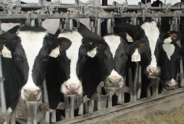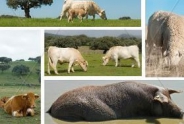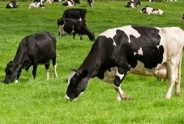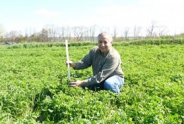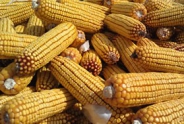Cover Crop InterSeeder
Bill Verbeten, Field Crops
Northwest New York Dairy, Livestock & Field Crops
February 17, 2014
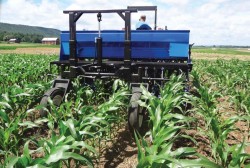
Want to plant a cover crop into standing corn or soybeans, apply a herbicide, and sidedress nitrogen all in one pass? Check out the cover crop InterSeeder developed at Penn State in this PDF. For additional information go to InterSeeder website.
InterSeeder Brochure (pdf; 787KB)
Upcoming Events
Cayuga County Pasture Walk
June 30, 2025
Groton, NY
Join members of the SCNY Dairy & Field Crops Team, and other Extension professionals on Monday, 6/20/25 at Simme Valley Simmentals Farm in Groton for this information filled pasture walk and special topic presentations.
Tioga County Pasture Walk
July 24, 2025
Owego, NY
Join Cornell Cooperative Extension of Tioga County, CCE South Central Dairy and Field Crops Team, and Tioga County Soil and Water Conservation District for a pasture walk!
This year, we will be visiting an organic dairy farm.
Announcements
USDA Contract Freezes and Terminations: Legal Action Steps for Farmers
For Farmers with Signed EQIP and CSP ContractsThis resource is written for farmers and ranchers nationwide who have a signed contract with USDA NRCS under the EQIP or CSP program for environmental improvements but have concerns that their contract is frozen, under review, or terminated, and who are uncertain of their rights to receive reimbursement as well as their ongoing obligations under the signed contract.
Version: 1.0
Issue date: Feb 28, 2025
A downloadable factsheet is available at our BUSINESS tab on the top of our webpage.
Additional Information: www.farmcommons.org
USDA Contract Freezes: Filing an NAD Appeal or Demand Letter
This resource is written for farmers and ranchers nationwide who have a signed contract with USDA NRCS under the EQIP or CSP program for environmental improvements and want more information on the mechanics of filing a National Appeals Division (NAD) appeal. This resource includes sample letters.
USDA NAD Appeal https://www.usda.gov/about-usda/general-information/staff-offices/office-hearings-and-appeals/national-appeals-division/nad-appeals
A downloadable factsheet is available at our BUSINESS heading at the top of our webpage.
ON FARM RESEARCH TRIALS 2025: Value of Manure & Power of Manure
Manure has all seventeen essential plant nutrients and can increase yield beyond what can be obtained with fertilizer only. In this project, Value of Manure, we evaluate the nitrogen fertilizer replacement value (how much N can we credit to manure?) and yield differences as a result of manure application.Complete Project Details: https://nydairyadmin.cce.cornell.edu/uploads/doc_1125.pdf
Manure history and field management (cover crops, crop rotation, etc.) impact soil nitrogen (N)- supplying capacity. In the project, Power of Manure, we evaluate the N supply, soil microbial biomass, and crop N uptake efficiency as a result of different manure histories, field agronomic management, and soil types.
Complete Project Details: https://nydairyadmin.cce.cornell.edu/uploads/doc_1126.pdf
Farm Participants Needed for Bale Grazing Grant!
Information on the Project:- Approximately 10 acres total needed to bale graze two different bale densities
- "Core" farms will graze two winters, "Demo" farms will graze one winter.
- Payments for both "Core" farms and "Demo" farms
- Baseline soil sampling by bale grazing team
- Forage measurements in early season by bale grazing team
- Late season clipping if residual not trampled down by farm
Interested farms can enroll for this winter or next.
Looking for 2-3 dairy farms to enroll! If interested, please reach out to Betsy Hicks, 607.391.2673 or bjh246@cornell.edu
Cornell Cow Convos - New Podcast
On-going podcast, New episodes released on the last Thursday of the month.Guest speakers, CCE Dairy Specialists.
Housed on Soundcloud Channel is CCE Dairy Educators
Topics:
- Preventative healthcare for cows
- The trend of beef on dairy
- What to look forward to in the new year for dairy
- Socially grouping or pair-housing calves
2018 Drug Residue Prevention Manual
For more than 30 years, the U.S. dairy industry has focused educational efforts on the judicious use of antibiotics through the annual publication of a Best Practices Manual. The 2018 edition of the National Dairy FARM Program: Farmers Assuring Responsible Management? Milk and Dairy Beef Drug Residue Prevention Manual is the primary educational tool for dairy farm managers throughout the country on the judicious and responsible use of antibiotics, including avoidance of drug residues in milk and meat.The manual is a quick resource to review those antibiotics approved for dairy animals and can also be used as an educational tool and resource for farm managers as they develop on-farm best management practices necessary to avoid milk and meat residues. Visit the Manual and Form Library to download copies of this important tool!
Follow us on Facebook
The team updates our facebook page frequently - follow us to be updated on our events, see some fun videos and get local area updates!facebook.com/SCNYDairyandFieldCropsTeam
NYSERDA Agriculture Energy Audit Program
NYSERDA offers energy audits to help eligible farms and on-farm producers identify ways to save energy and money on utility bills. Reports include recommendations for energy efficiency measures.Eligibility
Eligible farms include but are not limited to dairies, orchards, greenhouses, vegetables, vineyards, grain dryers, and poultry/egg. The farms must also be customers of New York State investor-owned utilities and contribute to the System Benefits Charge (SBC). Please check your farmís current utility bills to see if your farm pays the SBC.
Energy Audit Options
You can request the level of energy audit that best fits your farmís needs. NYSERDA will assign a Flexible Technical Assistance Program Consultant to visit your farm and perform an energy audit at no cost to you.
For more information and the NYSERDA Agriculture Energy Audit Program Application click here
For more information and the NYSERDA Agriculture Energy Audit Program Application click here

